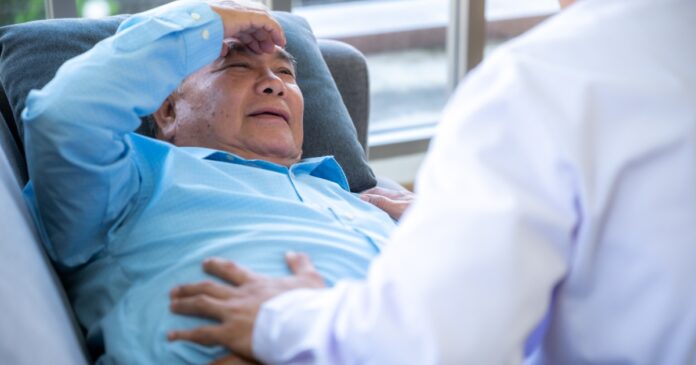The noninvasive and painless medical procedure improves motor skill recovery.
Sunway Medical Centre Velocity (SMCV) is leveraging a procedure that uses magnetic fields to stimulate the brain cells of stroke patients in Malaysia, where the condition is the third-leading cause of death, and improve their symptoms.
Repetitive transcranial magnetic stimulation (rTMS) uses repeated magnetic pulses to encourage the brain to rewire itself and improve its function. This is done by stimulating less active areas to reduce overactivity and balance brain function.
The treatment improves motor skill recovery, particularly in patients who can hardly move their arms, Dr Kok Chin Yong, Consultant Neurologist and Internal Medicine Physician, told Healthcare Asia. Progress is evident in just three to six months, he pointed out.
“You simply sit in a chair, and a machine comes close to the area of the brain you want to stimulate,” he said. “You’ll feel a sensation similar to tapping. Some individuals might feel a bit dizzy afterwards.”
Dr Kok noted that an imbalance occurs in the brain after a stroke, hampering recovery. “After a stroke, one side of the brain may become more active.”
But rTMS is not supposed to be a standalone solution. “It’s not a magic bullet. You won’t be able to move right after treatment. It’s part of a rehabilitation programme designed to help you recover faster compared with those who haven’t undergone rTMS.”
The treatment typically lasts 30 to 40 minutes per session, with about 10 sessions recommended over two weeks. “For longer-lasting effects, more sessions may be needed,” he said.
Though noninvasive and painless, some patients may not be suitable for rTMS, Dr Kok said. They include people with seizures, epilepsy, or those with metal implants in their brain or ears. “rTMS uses magnetic simulation and this could interfere with these conditions.”
Beyond stroke, rTMS is also used to treat other medical conditions such as depression. It can also be used to relieve nerve pain, including trigeminal neuralgia or severe facial pain, he said.
Although the condition can be alleviated with medication, some patients might still experience symptoms or allergies. In such cases, rTMS can temporarily reduce pain until the medication takes effect.
“It can also be used on patients with spinal cord pain, post-stroke pain, and conditions like fibromyalgia,” the neurologist said, referring to the chronic disorder that causes pain and tenderness throughout the body.
‘Whole village’ approach
The Kuala Lumpur-based hospital also uses various technologies in stroke rehabilitation, including robotic exoskeletons, which help improve patients’ walking and balance, and robotic arms to help with hand function recovery.
It likewise offers VitalStim therapy for patients with difficulty swallowing. “I’m sure you have heard that some patients after a stroke cannot swallow easily. VitalStim uses electrical impulses to stimulate the muscles around the throat.”
However, advancements in medical technology will not be as impactful without skillful medical professionals – in SMCV’s case, the stroke rehabilitation team is made up of physiotherapists, occupational therapists, speech therapists, and dietitians.
Employing a team-based approach, the hospital holds weekly team discussions to review patient progress and adjust care plans accordingly, Dr Kok said. “We discuss outpatient care and ways to improve patient outcomes. Sometimes, it’s done face to face, and other times through virtual platforms.”
Dr Kok said SMCV plans to use a transcranial ultrasound machine as part of continuing efforts to enhance the centre’s stroke care.
“This device will allow us to screen parts of the eye’s blood vessels to detect narrowing or the presence of emboli or blood clots” he said, adding that this would help improve treatment.
The hospital also plans to expand its rehabilitation services for other neurological conditions such as Parkinson’s disease, a progressive movement disorder that leads to involuntary tremors.
“We believe that effective stroke rehabilitation requires a ‘whole village’ approach — it’s not just about one or two doctors,” Dr Kok said. “Mental health is a key focus as well, since 30% to 50% of patients, when properly screened, show signs of depression.”

